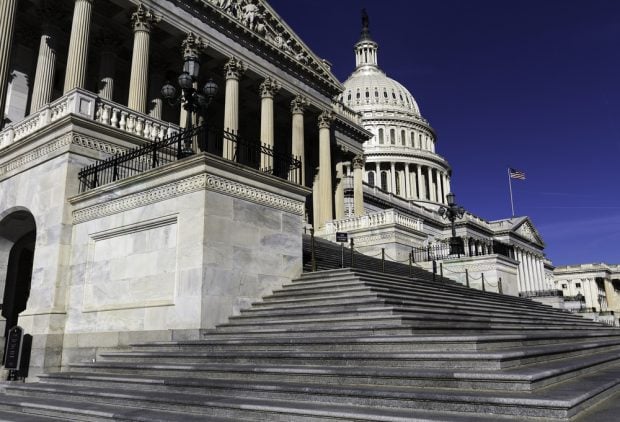Credit union trade associations have filed comment letterscritical of the NCUA's proposed stress test rule.
|The rule, introduced during the NCUA board's October meeting,would require credit unions with more than $10 billion in assets tomaintain a stress test capital ratio of at least 5%, and submit tostress testing by the NCUA.
|“Although we absolutely agree that it is important for thelargest credit unions to determine they have sufficient capital towithstand a range of economic conditions and that NCUA has animportant role in working with these institutions in this area, ouroverarching concern is that we do not agree a new regulation suchas the one NCUA is proposing is necessary to ensure these creditunions will conduct robust stress tests and comprehensive capitalplanning, since it is in their own best interests, and those oftheir members, to do so,” wrote CUNA Senior Vice President andDeputy General Counsel Mary Dunn, commenting on the proposed stresstest rule.
|Dunn said CUNA does not think the NCUA has demonstrated why a stress testrule is needed.
|“The fact that Congress under the Dodd-Frank Consumer Protectionand Wall Street Reform Act did not include NCUA among the agenciesdirected to implement capital plans or stress testing for thelargest institutions they regulate supports our view that a newregulation is not the best course of action,” she wrote.
|NAFCU Senior Vice President of Government Affairs/GeneralCounsel Carrie R. Hunt agreed with Dunn regarding the omission ofcredit unions from Dodd-Frank stress testing requirements.
|“The NCUA's efforts to achieve parity with other financialindustry regulators with respect to stress testing are neithernecessary nor designed in a way that reflects the unique nature ofcredit unions,” Hunt said. “Congress had the ability andopportunity to include a mandate in the Dodd-Frank Wall StreetReform and Consumer Protection Act that the NCUA perform stresstesting alongside the Fed, FDIC, and OCC, but notably chose not todo so,” she said. “The NCUA should acknowledge Congress' decisionand not force regulatory parity where it is not necessary.”
|Hunt said NAFCU was also concerned about the potential impact ofbifurcating the credit union industry through this rule, and theprecedent it would set for future rulemaking.
|CUNA also said the NCUA should release more information about the cost ofcompliance with the rule if it is ultimately approved.
|Scott Hunt, director of the Office of National Examinations atthe NCUA, said during the October board meeting the cost for theNCUA to conduct the tests would be $1 million or less per creditunion to establish the program, and approximately $500,000 per yearfor each additional annual test.
|“NCUA has not shared with credit unions how it arrived at the $4million level, and we feel the agency should have provided moreinformation regarding these cost figures,” Dunn wrote. “Inaddition, NCUA has not said that implementation of the rule willcost no more than $4 million, so even though the estimate is a highone, there is no guarantee that promulgation of the rule onceadopted would not cost much more well into the future.”
|The credit unions with more than $10 billion in assets affectedby the rule would be the $54 billion Navy Federal Credit Union inVienna, Va., the $27 billion State Employees' Credit Union ofRaleigh, N.C., the $16 billion Pentagon Federal Credit Union inAlexandria, Va., and the $12 billion BECU in Tukwila, Wash. Therule would require these credit unions to maintain a stress testcapital ratio of at least 5%.
|NASCUS President/CEO Mary Martha Fortney said the NCUA hasfailed to right size the rule.
|“NCUA should limit the requirement for a federally insuredcredit union to submit a formal capital plan to a threshold morecomparable with the Federal Reserve capital plan submissionthreshold of $50 billion,” Fortney wrote. “Simply put, requiringsubmission of capital plans by credit unions with assets that are$10 billion or greater disadvantages credit unions in the $10billion to $49 billion assets size in relation to a like-sizedbank.”
|NASCUS also said the results of the NCUA's stress testing shouldbe confidential. Matz said the NCUA board would delay the decisionof whether or not to make stress tests results public until afterreviewing the proposed rule's public comments.
|“Generally speaking, the rationale for making stress tests of afinancial institution public are compelling,” Fortney wrote in hercomment letter. “However, in this instance, the inexperience of thecredit union system administering a formal stress testingregulation, the uniqueness of credit union structure, and theexample set by the Dodd-Frank mandated large bank stress testingsuggest the stress test results be treated as confidentialexamination product.”
|CUNA urged the NCUA to issue guidance in place of a rule, whichcould be administered through the agency's annual examination ofthe largest credit unions.
|“We believe this approach will accomplish the agency'sobjectives to help protect the NCUSIF particularly under adverseeconomic conditions, while minimizing costs to NCUA and creditunions alike. It would also avoid sanctions for credit unionsand allow them some flexibility in implementing their capitalplanning processes,” Dunn said.
Complete your profile to continue reading and get FREE access to CUTimes.com, part of your ALM digital membership.
Your access to unlimited CUTimes.com content isn’t changing.
Once you are an ALM digital member, you’ll receive:
- Critical CUTimes.com information including comprehensive product and service provider listings via the Marketplace Directory, CU Careers, resources from industry leaders, webcasts, and breaking news, analysis and more with our informative Newsletters.
- Exclusive discounts on ALM and CU Times events.
- Access to other award-winning ALM websites including Law.com and GlobeSt.com.
Already have an account? Sign In
© 2024 ALM Global, LLC, All Rights Reserved. Request academic re-use from www.copyright.com. All other uses, submit a request to [email protected]. For more information visit Asset & Logo Licensing.









